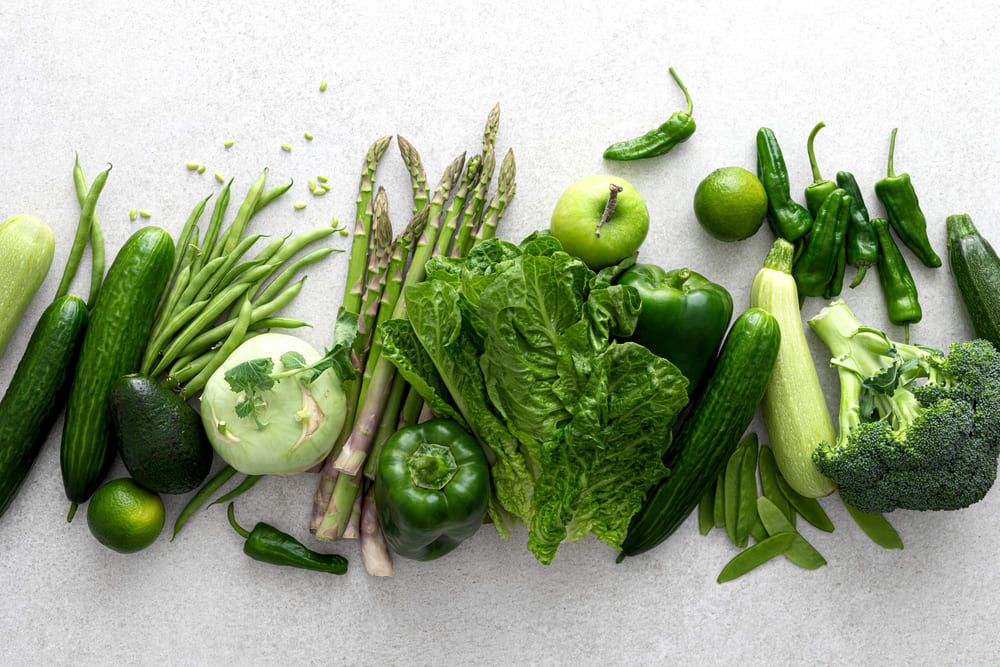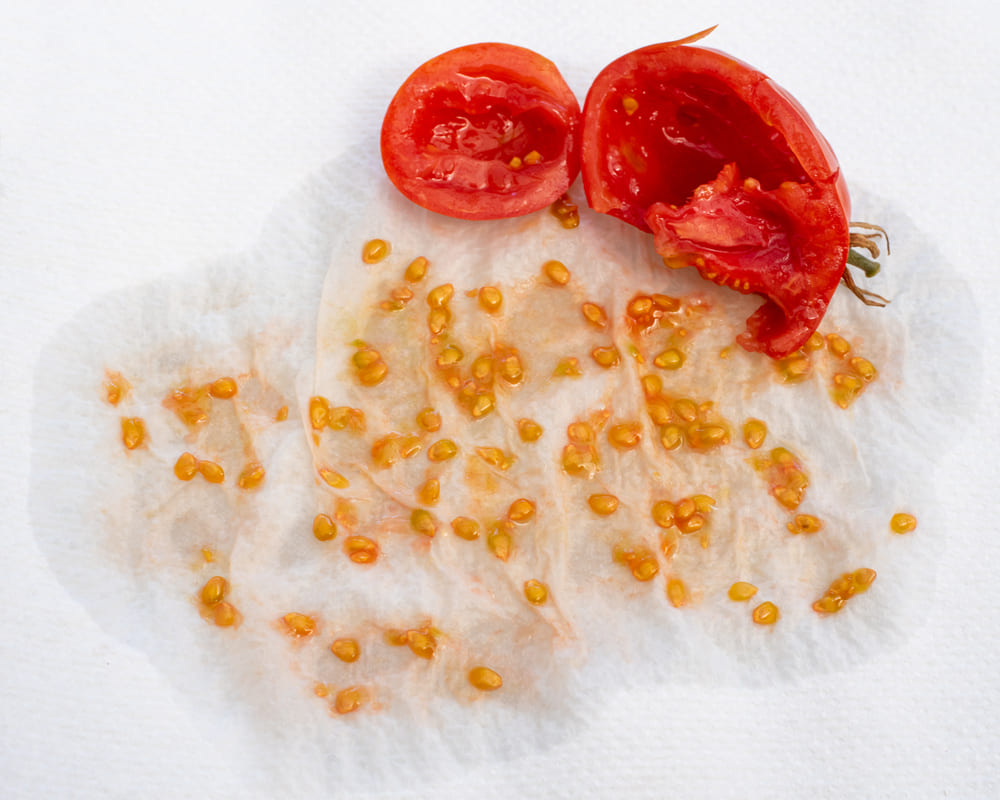Vegetables have seeds, which are an important part of the plant’s life cycle. The seeds contain all the nutrients and genetic material necessary for the growth of new plants.
Most vegetables can be propagated from their seeds, either by planting them directly in soil or by growing them indoors in trays. Some common vegetables that have seeds are tomatoes, cucumbers, squash, peppers, and peas. Additionally, many root vegetables such as carrots, onions, and potatoes also contain seeds.
These seeds can be planted indoors to start a new crop or harvested and stored for the following season. Vegetable seeds provide a sustainable method of growing food at home and offer gardeners an easy way to start their own gardens with minimal investment.

Do All Vegetables Come From Seeds?
Do all vegetables come from seeds? The answer is both yes and no. In some cases, small pieces of certain vegetables such as potatoes or sweet potatoes can be planted directly in the ground and will turn into full-grown plants.
However, for most other vegetables, it’s necessary to start out with a seed. Seeds create a replicable way for farmers to cultivate a crop and ensure each patch produces healthy fruits and vegetables.
There are hybridized varieties of some plants that can be created by combining two different types of seeds, but in general it’s more consistent to use the seed from one variety of vegetable than trying to mix several together.
Growing your own garden is an excellent way to get acquainted with growing vegetables from seeds, and you might discover that you have a knack for creating unique dishes with your homegrown produce.
If Vegetables Don’t Have Seeds, How do they Reproduce?
Vegetables are a critical component of many diets around the world. But, if vegetables don’t have seeds, how do they reproduce? The answer is quite simple – vegetative reproduction.
Vegetative reproduction is the process by which plants create new individual organisms without relying on seeds. This process can occur in several different ways, including budding, layering, cutting and grafting.
- Budding is when a plant grows another offshoot from its stem or root; this is why some plants become rampant over time.
- Layering involves partially burying part of the existing plant so that it takes root and becomes an entirely separate entity from the parent plant.
- Cutting involves taking a piece of an existing plant and planting it as a separate individual organism.
- Finally, grafting is a process where two different plants are joined together to form one unit.
All of these methods allow plants to reproduce without relying upon seeds, making them ideal for use in home gardening and large scale farming operations alike!
Do Any Vegetables Have Seeds Inside Them?
Yes, many vegetables contain seeds inside them. Seeds are the part of the vegetable that allow it to reproduce and create new plants for future harvests. Vegetables with seeds inside them include pumpkins, cucumbers, tomatoes, squash, peppers, and beans.
These vegetables are harvested after the seed has formed and ripened within the edible portion of the vegetable. The seeds can then be planted in a garden to grow new plants – or they can be saved for later use.
Aside from these common vegetables with seeds inside them, there are also some leafy greens such as spinach and kale that contain small amounts of seeds as well. Knowing which vegetables have seeds is important for both harvesting and planting purposes.
What Are Culinary Vegetables? Do They Have Seeds?

Culinary vegetables are edible plants or parts of plants that are used in cooking. They can either be eaten raw or cooked, depending on the recipe.
Examples of culinary vegetables include carrots, asparagus, green beans, peppers, potatoes, onions, and garlic. Some of these vegetables also have edible leaves including lettuce and spinach.
Depending on the type of vegetable, they may have seeds. For instance, tomatoes and cucumbers have seeds while carrots and onions do not. Peppers can also have seeds which can vary in size and flavor depending on the variety.
Culinary vegetables are an important part of any healthy diet as they are packed with essential vitamins and minerals. Not only do they provide a wealth of nutrition but they also add flavor to dishes which makes them even more enjoyable to eat!
Are All Vegetables With Seeds Actually Fruit?
It is quite easy to confuse a fruit for a vegetable. Many people consider fruits as vegetables. When it comes to seeds, this confusion arises just the same. What is the difference when it comes to fruit and vegetables?
Cucumbers, tomatoes, and green peppers are always considered to be vegetables. But in reality, tomatoes, cucumbers, and green peppers are scientifically considered fruits.
This means that in botanical science anything with a seed is technically a fruit. Vegetables are the plant itself or edible parts of the plant like stems, leaves, and roots. Tomatoes are actually fruits of these vegetable plants. Peppers, beans and eggplants are all examples of fruits that we consider to be vegetables.
Why Do Vegetables Not Have Seeds?
Vegetables are some of the healthiest foods that we can consume. They are packed with essential vitamins, minerals, and other nutrients that our bodies need.
However, not all vegetables come with seeds. This is because there are certain vegetables that cannot produce their own seeds and therefore do not have them in them.
One of the main reasons why vegetables don’t have seeds is because they are propagated by vegetative reproduction, which is a process whereby new plants can be grown from different parts of the original plant without having to use seeds.
This allows for a faster and more efficient production of vegetable crops as well as being much more cost effective since no need for seeds means that farmers don’t have to pay for them or waste time planting them each year.
Furthermore, it also allows for greater control over the harvesting season since farmers can plan out when to harvest their crops depending on their location’s climate.
Common Characteristics of Vegetables
Vegetables are an important part of a healthy diet, providing us with essential nutrients and vitamins.
Common characteristics of vegetables include the presence of seeds, leaves, stems, roots or tubers. They can be eaten raw or cooked in various ways such as steaming, boiling, roasting, baking and frying.
Vegetables also come in various colors and shapes, ranging from dark greens to bright oranges and yellows.
Typical vegetables are potatoes, carrots, tomatoes, onions and peppers. Leafy greens like spinach and kale are also commonly included in meals.
All vegetables contain some protein and carbohydrates, as well as vitamins A, C and K. Eating a wide variety of vegetables will help ensure you get all the necessary nutrients your body needs.
What Vegetables Have Seeds?

Vegetables are a great way to add flavor and texture to meals, but they are also an important source of nutrition.
Many vegetables contain seeds, which can be used for planting or consumed directly as part of the vegetable itself. Examples of vegetables that have seeds include peppers, cucumbers, squash, beans, corn, and peas. The seeds inside these vegetables can be eaten raw or cooked.
Some vegetables like tomatoes and okra contain their seeds in a gel-like substance that is edible.
Pumpkin and sunflower seeds are also popular snacks and can be used as ingredients in salads or other dishes.
Seeds from some vegetables like artichokes or cardoons allow us to enjoy parts of the vegetable that we would not normally consume such as the stem and flower buds.
Eating more of these nutritious vegetable-based foods will help improve our overall health and wellness.
Conclusion
In conclusion, vegetables generally do have seeds, although there are a few exceptions. Vegetable seeds come in a variety of sizes and colors, and they can be eaten raw or cooked as part of a meal.
Some vegetable seeds also have medicinal properties that can help support good health. Planting vegetable seed is an important part of many types of gardening, and understanding which vegetables have seeds can help gardeners successfully grow their crops.
Vegetables with visible seeds such as tomatoes, cucumbers, squash, and melons are easy to recognize, while other vegetables like bell peppers and corn may require a closer look to find their hidden inner seed value.
